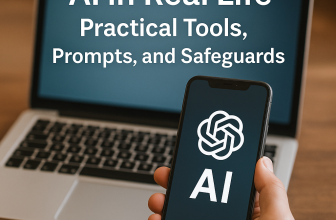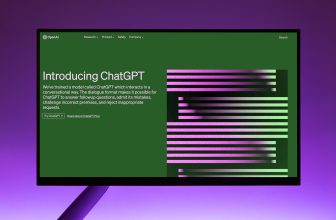
Diving into the world of SEO as a content writer is like embarking on a treasure hunt 🗺️. You need the right map, a sprinkle of creativity, and the secret compass of strategic frameworks to discover the gold—engaging content that clicks with readers and search engines alike!
Introduction to SEO and Content Writing
SEO and content writing are like peanut butter and jelly 🥜🍇—they’re just better together! We’re not just throwing keywords around like confetti 🎉; we’re creating yummy content sandwiches that feed both the hungry algorithms and our reader’s curiosity.
Understanding the CLEAR Framework
Imagine your content is a superhero 🦸♀️. The CLEAR framework is your secret weapon to save the day. You spot the challenge (a damsel in distress), recognize the limitation (oh no, a tall building!), predict the effect (a hero’s gotta do what a hero’s gotta do), propose a daring action (leap over the building in a single bound!), and voilà—the happy result (the crowd cheers!).
The Role of SWOT Analysis in Content Strategy
Roll out the SWOT Analysis like a game of Battleship. 💥 Strengths? That’s your battleship. Weaknesses? Those sneaky submarines. Opportunities? Power-ups! And threats? Incoming torpedoes! Navigate through these waters to chart a course for content that’s unsinkable.
The Blueprint of Compelling Content
Creating killer content isn’t rocket science 🚀, but hey, a little formula never hurt anybody. With tools like PAR, AIDA, and STAR, we’re basically the MacGyver of content writing—turning a paperclip, a rubber band, and a sprinkle of creativity into something spectacular.
Applying PAR for Problem-Solving Content
The PAR framework is like a chef’s recipe for the perfect dish 🍲. Spot a problem (too bland!), whip up an action (add spices!), and serve up a tantalizing result (Chef’s kiss! 👌). That’s how we cook up content that solves problems and tastes great!
AIDA: The Pathway to Reader’s Engagement
Using AIDA is like being a DJ at the world’s coolest party 🎶. Grab their Attention with a killer track, keep their Interest with the groovy beats, create Desire by teasing the drop, and then Action—everyone’s dancing! That’s how we get readers to groove with our content.
STAR Method in Storytelling
Stories with the STAR method are like campfire tales with a twist 🔥. Set the scene (a dark and stormy night), introduce the task (find the marshmallows), take action (brave the spooky woods), and reveal the result (ghost stories and s’mores for all!). That’s content that shines bright like a star. ✨
Let’s Create Some Fun Prompt Templates!
- CLEAR Your Way to Content Success:
- Challenge: “Why can’t I stop binge-watching cat videos? 😼”
- Limitation: “Only so many hours in a day!”
- Effect: “Need more funny furball content!”
- Action: “Curate the top 10 must-see kitty compilations.”
- Result: “Become the go-to source for cat-tastic entertainment!”
- SWOT and Roll All Night:
- Strength: “I’ve got jokes for days! 😂”
- Weakness: “But do I overdo the puns…?”
- Opportunities: “A pun a day keeps the boredom away!”
- Threats: “Don’t wanna be a one-trick pony—mix it up with memes!”
- PAR-ty Time:
- Problem: “Out of ideas for the company picnic 🐜🧺.”
- Action: “Organize a superhero costume contest!”
- Result: “Best. Picnic. Ever. 🦸♂️🦸♀️”
- AIDA’s Content Disco:
- Attention: “Did someone say disco? 🕺”
- Interest: “Disco-themed content is back, baby!”
- Desire: “You know you want to boogie with our blog.”
- Action: “Click that glittery link and let’s dance!”
- STAR in Your Own Story:
- Situation: “Lost in the content jungle 🌴.”
- Task: “Find the path to the Temple of Trending Topics.”
- Action: “Hack through the vines of vapid content.”
- Result: “Discover the treasure of viral articles!”
Wrapping Up Like a Burrito 🌯
We’ve danced through frameworks and crafted content that’s more fun than a barrel of monkeys 🐒. Always remember, whether you’re the hero, the DJ, or the chef in the kitchen of content, with the right approach, you’ll cook up something that keeps ’em coming back for seconds!
More templates
CLEAR Content Prompt Template:
- Challenge: [Describe the primary issue or challenge your content will address.]
- Limitation: [Identify any limitations or constraints related to the challenge.]
- Effect: [Explain the potential or existing impact of the challenge.]
- Action: [Detail the action or solution you propose to address the challenge.]
- Result: [Predict the outcome after the action is implemented.]
Example:
- Challenge: “Keeping [audience] engaged with [content topic]”
- Limitation: “Limited by [specific constraint, e.g., content medium or platform]”
- Effect: “This could lead to [effect, e.g., decreased engagement or lower traffic]”
- Action: “We will [action, e.g., introduce interactive elements]”
- Result: “Expect to see [result, e.g., an increase in comments and shares]”
SWOT Analysis Prompt Template:
- Strength: [What is your content’s biggest advantage?]
- Weakness: [What aspects of your content could be improved?]
- Opportunities: [What opportunities exist for your content to reach a wider audience or engage more deeply?]
- Threats: [What external factors could threaten the success of your content?]
Example:
- Strength: “[Your unique insight or angle on a topic]”
- Weakness: “[Aspect of content that is underdeveloped or lacking]”
- Opportunities: “[Upcoming event or trend to leverage in your content]”
- Threats: “[New competitor or changing algorithm]”
PAR Article Structure Template:
- Problem: [The issue or pain point your article will tackle.]
- Action: [The steps or methods you will use to address the problem.]
- Result: [The beneficial outcomes your reader can expect after implementing your advice.]
Example:
- Problem: “[Common problem your target audience faces]”
- Action: “[Your proposed solution or method]”
- Result: “[Expected positive outcome for the reader]”
AIDA Blog Post Template:
- Attention: [An attention-grabbing opening or fact.]
- Interest: [Information that piques curiosity and keeps readers interested.]
- Desire: [Benefits or value propositions that make readers want what you’re offering.]
- Action: [A clear call to action.]
Example:
- Attention: “Did you know that [surprising statistic or fact]?”
- Interest: “Here’s why it matters to you.”
- Desire: “Imagine achieving [desired outcome], simply by [solution].”
- Action: “Start by [first actionable step], today!”
STAR Storytelling Template:
- Situation: [Set the scene or context for your story.]
- Task: [Describe the challenge or goal.]
- Action: [Explain the actions taken to address the task.]
- Result: [Share the outcomes or lessons learned.]
Example:
- Situation: “[Describe a relatable scenario]”
- Task: “[The goal or challenge within the scenario]”
- Action: “[What was done to tackle the challenge]”
- Result: “[The positive result or takeaway]”





